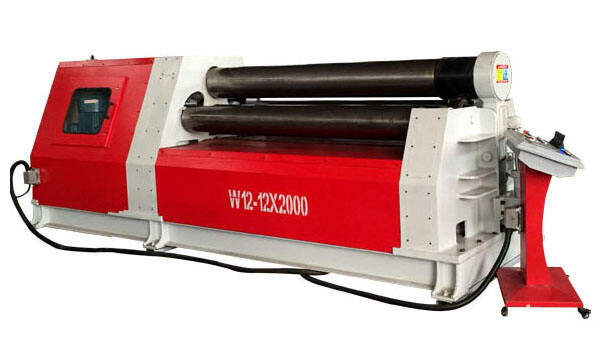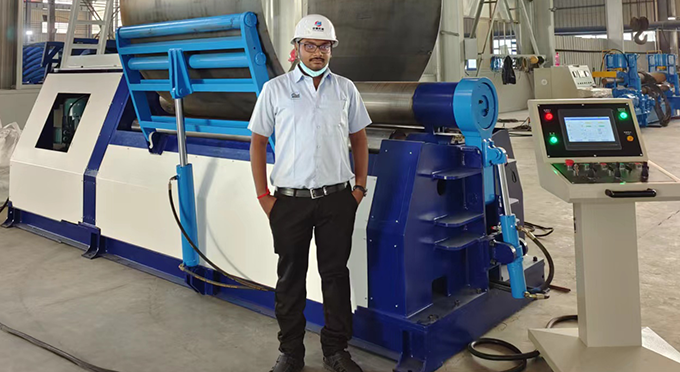Superior Precision and Cutting Accuracy
Achieving Micro-Level Tolerances with Fiber Laser Technology
Fiber laser technology stands out in the realm of precision manufacturing due to its unparalleled ability to achieve micro-level tolerances. This level of precision, often as fine as ±0.01mm, is particularly critical for industries requiring exact specifications, such as aerospace and electronics. The exceptional accuracy of fiber laser cutting machines can be attributed to the fine beam quality and high energy density they offer. These laser beams produce clean cuts with minimal thermal impact, ensuring the integrity of the processed materials. Consequently, products manufactured using this technology exhibit superior quality and require less rework. Incorporating fiber laser cutting machines into production processes enhances manufacturing efficiency, bolsters product quality, and minimizes wastage, making it a highly desirable choice.
CNC Integration for Repeatable Results
The integration of Computer Numerical Control (CNC) systems with laser cutting machines has revolutionized the industry by enabling repeatable and automated production processes. This technology ensures uniformity in output, crucial for maintaining high standards across production batches. With CNC integration, operators can easily program complex designs and make rapid adjustments, ensuring that even the most intricate specifications are met consistently. The synergy between CNC systems and laser cutting machinery not only reduces setup times but also enhances throughput, leading to improved manufacturing efficiency. Adopting CNC technology in laser cutting not only streamlines operations but also allows for precision-driven manufacturing, catering to the growing demands of modern industries.
Material Versatility in Manufacturing
Cutting Metals from Aluminum to Titanium
Laser cutting machines excel in their ability to handle a wide range of metals, from lightweight aluminum to robust titanium. This versatility is crucial for industries that require the flexibility to process varying materials with precision. For instance, some laser machines can seamlessly transition from cutting thin aluminum sheets to tackling thicker titanium plates, addressing different industrial requirements. This capability not only broadens a manufacturer's service offerings but also allows for tapping into niche markets that demand customized solutions. Furthermore, according to industry studies, laser cutting often results in smoother edges compared to traditional techniques, thereby minimizing the necessity for secondary finishing processes. This reduction in additional steps not only cuts down on time and labor costs but also enhances the efficiency of manufacturing operations. Integrating laser cutting technologies ensures that businesses can maintain a competitive edge by offering precision and quality in their metalworking processes.
Expanding Applications with CO2 Laser Adaptability
CO2 laser cutting machines are renowned for their adaptability across a variety of materials, extending their utility well beyond metalworking. They can efficiently process plastics, wood, and textiles, which opens up new avenues for manufacturers to explore diverse industrial applications without the need to invest in multiple specialized machines. This adaptability can significantly boost revenue streams by allowing manufacturers to cater to different sectors with a single piece of equipment. Moreover, CO2 lasers are highly valued for their processing speed and superior edge finish. This efficiency not only garners them a reputation for versatility within the manufacturing community but also underscores their potential in reducing production times and improving overall product quality. By harnessing the capabilities of CO2 lasers, businesses can expand their operational scope, serving a broader market while ensuring high-quality outcomes. Embracing such technology facilitates the optimization of manufacturing processes, paving the way for multiple industry applications.
Enhanced Production Efficiency
Automated Workflows with Hydraulic Plate Bending Integration
Integrating hydraulic plate bending machines with laser cutting systems dramatically enhances production efficiency by streamlining the transitioning processes. With this automation, manufacturers experience reduced manual intervention, which in turn decreases production lead times and amplifies throughput. Real-world examples, such as those reported by Allsops, demonstrate that manufacturers can achieve up to a 30% increase in efficiency by implementing integrated systems. This automation allows manufacturers to transition seamlessly from cutting to bending, minimizing manual adjustments and ensuring precise outputs from the first part produced. Such advancements make a compelling case for the integration of these technologies within competitive manufacturing environments.
Reduced Cycle Times Through Three-Roll Plate Rolling Synergy
The synergy between laser cutting and three-roll plate rolling machines can significantly reduce cycle times, enhancing the efficiency of material handling from cutting to forming stages. When these machines are utilized together, the need for manual logistics is substantially diminished, considerably reducing total production time. Industry reports indicate a potential over 40% reduction in cycle times when these processes are integrated, dramatically impacting delivery schedules favorably. This reduction not only optimizes the production flow but also ensures quick adaptation to product changes, making these systems vital for manufacturers looking to improve their competitive edge in today's fast-paced markets.
Cost-Effective Manufacturing Solutions
Minimizing Material Waste with Optimized Kerf Widths
Advancements in laser cutting technology open a pathway for minimizing material waste, which is a crucial factor in cost-effective manufacturing. By enabling the optimization of kerf widths—the narrow slit made during the cutting process—manufacturers can drastically reduce the amount of surplus material, thus improving cost-efficiency. With precision cut geometries, laser cutting systems ensure that the maximum potential of raw materials is utilized, leading to higher yield rates. As a result, manufacturers can significantly cut down on material costs. Studies indicate that with the integration of advanced laser cutting techniques, companies have witnessed up to a 15% improvement in their material utilization metrics. This shift not only aids in cost reduction but also translates into more sustainable production practices by reducing waste.
Energy Savings Compared to Traditional Hydraulic Press Brake Systems
One of the most compelling advantages of laser cutting machines over traditional hydraulic press brake systems is their superior energy efficiency. Laser cutters consume significantly less energy, which translates into substantial operational savings for manufacturers. This energy-saving aspect is pivotal not only for reducing overhead costs but also for fostering sustainable manufacturing practices—something that is increasingly important in the current eco-conscious business environment. Experts estimate that transitioning to laser cutting systems can result in energy usage reductions of 20-25%, allowing manufacturers to lower their energy bills significantly while simultaneously reducing their carbon footprint. This energy efficiency makes laser cutting an attractive solution for businesses seeking to balance cost-effective operations with environmental responsibility. By integrating laser cutting machines, businesses can achieve both fiscal and ecological benefits, further driving the demand for such technologically advanced solutions in the manufacturing industry.
Safety and Environmental Advantages
Laser-Guided Hazard Prevention Systems
Modern laser cutting systems have significantly advanced workplace safety with the introduction of laser-guided safety features. These systems are designed to recognize human presence and respond swiftly by automatically shutting down if an operator gets too close, thereby reducing the likelihood of accidents. According to data, employing these advanced safety systems can decrease workplace injuries by up to 40%. This makes them an essential component in manufacturing environments where safety is paramount. Implementing such technologies reflects a proactive approach to safeguarding workers, which in turn boosts productivity by reducing downtime related to accidents.
Eco-Friendly Operation with Reduced Emissions
Laser cutting machines also offer substantial environmental benefits through their reduced emissions compared to traditional cutting methods. By utilizing less power and generating minimal waste, these machines support cleaner manufacturing practices essential for meeting today’s stringent environmental standards. Regulatory bodies are increasingly acknowledging laser technology as a viable path to achieving lower emissions requirements. This endorsement encourages more manufacturers to adopt laser systems, thereby promoting environmental sustainability industry-wide. As the demand for eco-friendly solutions grows, laser cutting technology positions itself as a leader in advancing sustainable industrial practices.




